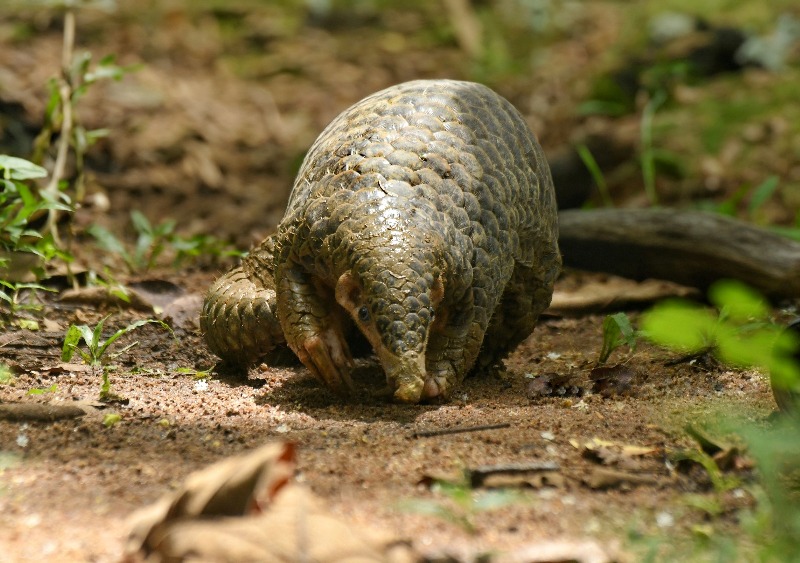In recent times, wildlife crime has emerged as one of the most critical crises in Northeast India. With its close ties with drugs, arms and human trafficking crimes, it has been grappling the scenery of the world with so signs of stopping.
Among the variety of plants and animals that have been exploited in this predicament, Pangolins, notably the Chinese pangolin (Manis pentadactyla) and the Indian pangolin (Manis crassicaudata), currently the world’s most trafficked mammal, are facing an unprecedented crisis in Assam and the Northeast.
“Extensive poaching and illegal trade networks are pushing these shy, nocturnal creatures to the brink of extinction. Despite their protection under Schedule I of the Wildlife (Protection) Act, 1972 as amended in 2022 in India, and their ‘Critically Endangered’ status on the IUCN Red List, they continue to be slaughtered for their scales and meat- of which the scales are falsely believed to have medicinal properties in some Asian countries,” Dr. Bibhab Kumar Talukdar, Secretary General and CEO of Aaranyak, who also heads its Legal and Advocacy Division, said.
Startling Seizures & Arrests:
“Between 2018 and 2022, India witnessed 342 pangolin trafficking incidents, accounting for over 1,200 individuals.Northeast India, a key transit route, has seen alarming seizures, with Assam, Arunachal Pradesh and Manipur emerging as critical hotspots.Several poachers and traders have been arrested in recent crackdowns, yet the illegal trade persists, often linked to greater international syndicates,” said Dr. Jimmy Borah, Senior Manager in Aaranyak’s Legal and Advocacy Division.
“Socio-economic studies particularly in Assam have identified that local hunters from various places of North East India are involved in pangolin hunting and trading. The scales from a single pangolin can occasionally equate to about four months’ income for these hunters, making poaching a lucrative activity driven by external demand,” Ivy Farheen Hussain, Senior Project Officer in Aaranyak’s Legal and Advocacy Division, said.
Amidst this crisis, Aaranyak, a prominent biodiversity conservation organization in Northeast India, has been proactive in addressing this crisis through its Legal and Advocacy Division. Aaranyak is leading the charge to curb pangolin trafficking through multi-pronged efforts:
- Sensitisation & Capacity Building: Collaborating with the Sashastra Seema Bal (SSB) and other law enforcement and border security agencies, Aaranyak conducts regular training sessions to enhance vigilance along India’s porous borders.
- Community Surveillance: Formation of Community Surveillance and Monitoring Teams (CSMT) across key areas, empowering locals to act as the first line of defense against poachers.
- Legal & Policy Advocacy: Strengthening enforcement mechanisms by assisting agencies in wildlife crime investigations and legal proceedings.
- DETERS: Aaranyak’s initiative D.E.T.E.R.S. (Disrupt and End Trade of Endangered and Rare Species) has been instrumental in deterring illegal pangolin trade networks. By equipping CSMTs and enforcement agencies with real-time intelligence and digital surveillance tools, DETERS is significantly enhancing efforts to dismantle wildlife crime syndicates in Northeast India.
A Call to Action:
The fate of pangolins in Northeast India hangs by a thread. Proactive efforts to sensitise and aware the officials from different law enforcement agencies in the NE region is the need of the hour to check illegal killing and trade of Pangolins.
Team Aaranyak shall be delighted to help in any orientation initiatives. If immediate and stringent actions are not taken, we risk losing these remarkable creatures forever.
What comes up as a grim hope in these trying times is the discovery of another species of pangolins – the Indo-Burmese Pangolins just early last year distributed over Assam and Arunachal Pradesh regions.
ALSO READ: Assam: IIT Guwahati develops flexible heating fabric for cold climates
Strengthened law enforcement, community participation and international cooperation are central steps to ensure the survival of these threatened species.
The time to act is now—before it’s too late. With mutual collaboration and cooperation, we are sure that we can make a vast and positive change to secure the future of these scaled beauties.















